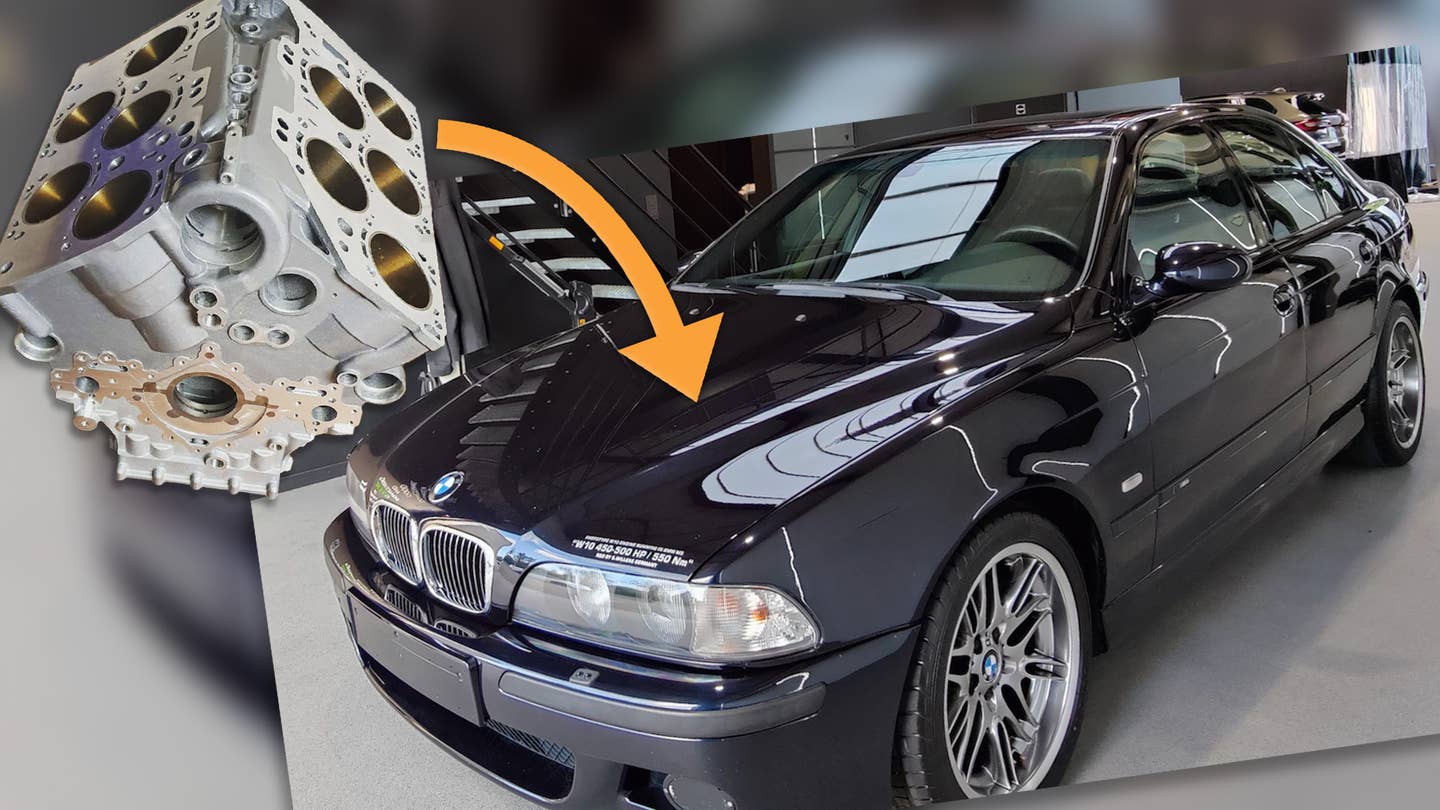The Plot Thickens: VW Tested Its Secret W10 Engine in a BMW M5
It turns out the first 10-cylinder BMW M5 was built by… Volkswagen!

Yesterday, we asked for help unraveling the mystery of a W10 engine thought to be a lost VW prototype from the early 2000s. Today, we got a surprising lead that doesn't just link the engine to VW, but reveals what happened to one of the other three prototypes. It ended up in a BMW M5, which came out so nicely that the W engine's inventor Ferdinand Piëch allegedly used it as his personal car. Yeah, this all escalated pretty quickly.
All this comes from an active for-sale listing by GDM Motors, a Belgian-German GT racing team. It's selling an E39 M5 that's said to be a former VW test mule, one powered by a prototype W10. Unless some mystery engineer is pumping out prototype W10s from their garage, these two engines are very likely siblings.
The story goes like this: VW didn't have any suitable cars to test the W10 in, so it brought in an M5. (BMW didn't put a V10 into the M5 until 2004's E60.) Piëch, who conceived the W engine in the first place, apparently liked the result so much that he used the mule as his personal vehicle. How it escaped the clutches of a huge corporation like VW is not clear, but it's not unprecedented.
Short of an official statement from Volkswagen, this is as close as we're gonna get to confirming the W10 was a legit VW project. We can also visually match the incomplete prototype we reported on yesterday with the engine in this BMW. Comparing the cylinder head and engine block with a shot of the BMW's engine bay, we can identify a handful of identical casting details and bolt locations, indicating they're the same engines. That also means the specs of the M5's engine should match the potential of the incomplete one.
The W10 BMW (estimated at 5.0 liters by the owner of the other engine) is said by its seller to produce 500 horsepower and 406 pound-feet of torque. The listing indicates the car's weight to be 4,048 pounds, while a stock E39 came in at 4,024 according to Edmunds. That means the W10 is only 24 pounds heavier than the stock 4.9-liter S62 V8, whose long block comes in at 348 lbs according to Bimmerforums.com. Therefore, the complete 5.0-liter W10 weighs about 372 pounds, assuming no other major changes were made to the car.
This doesn't bring the owner of the disassembled W10 prototype any closer to making their engine run again, but it does give us some answers. Two of these mystery motors are accounted for. The third of the rumored three W10s built hasn't resurfaced, but two survivors of three isn't bad even if the third is gone.
We've reached out to GDM Motors for any more info it may have, and for video of the car running (if it even does). But the trail may go cold until someone buys it, and checks the glove box for development docs. That won't be cheap, as the price is only available on request; this is one of those "if you have to ask" moments. But the fact that we've gotten this many answers about the W10's history is still something to be satisfied with.
Got a tip or question for the author? You can reach them here: james@thedrive.com
